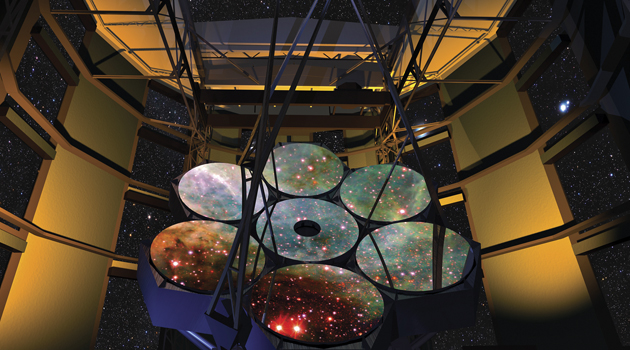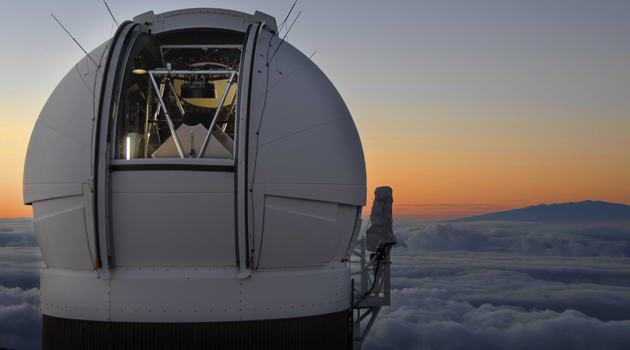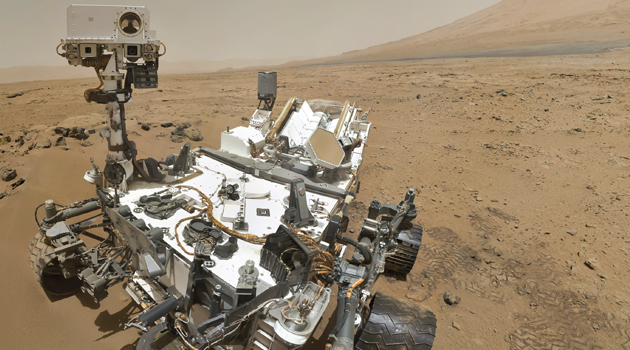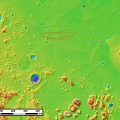The Smithsonian is delighted to be included in this year’s Aspen Ideas Festival (June 26 – July 2 in Aspen, Colo.) which will gather some of the most interesting thinkers and leaders from around the United States and abroad to discuss their work, the issues that inspire them, and their ideas. This year Charles Alcock, director of the Harvard-Smithsonian Center for Astrophysics; Justin Kasper, astrophysicist at the Harvard-Smithsonian Center for Astrophysics; and Maria Banks, a geologist at the National Air and Space Museum’s Center for Earth and Planetary Studies are among the participants of the Aspen Ideas Festival. The questions and answers below are designed to give readers a better understanding of the remarkable work that these three scientists do with links to a number of relevant Smithsonian Web sites.

This image shows the seven primary mirrors that will collect light for the Giant Magellan Telescope. It will be operational in about 10 years and will be located in Chile.
Q: Are we alone in the universe?
A: The jury is still out. However, Dr. Charles Alcock and a core group of international partners are seeking to answer this question. Alcock is leading the Harvard-Smithsonian Center for Astrophysics’ work as one of the founding partners of the Giant Magellan Telescope, which will image the universe with ten times the sharpness of the Hubble Space Telescope and see farther back in time than ever before possible. Stay tuned for first light in 2020. For more information on the Giant Magellan Telescope click here.

Smithsonian astrophysicist Justin Kasper examines an image of the Sun at the Smithsonian Astrophysical Observatory in Cambridge, Mass.
Q: How do you touch a star?
A. Very carefully. Astrophysicists like Dr. Justin Kasper, the youngest lead on any NASA mission, are busy testing materials like synthetic sapphire and building one of the first instruments that will literally “touch” the sun. The Solar Wind Electrons Alphas and Protons (SWEAP) investigation will be launched on NASA’s Solar Probe Plus in 2018. For more information on SWEAP and Dr. Justin Kasper’s work, please click here.
Q: What’s the weather like on Mars?
A: Partly cloudy with a chance of sandstorms. Advanced remote sensing capabilities by a fleet of orbiting spacecraft today enable fellows like Dr. Maria Banks at the Smithsonian’s Center for Earth and Planetary Studies to observe and track some of the wild sand dune activity on Mars and compare it to deserts on Earth – getting us ever closer to unraveling the mysteries of Martian climate change. For more information on the work of Dr. Maria Banks and the Center for Earth and Planetary Studies please click here.
Click here to view a short Smithsonian Channel “Women in Science” video featuring Dr. Banks or here to read a blog post from Dr. Banks in Antarctica.

This Hubble Space Telescope photo of galaxy Messier 74 reminds us that spiral galaxies are some of the most beautiful and photogenic residents of the universe. Nearly 70 percent of the galaxies closest to the Milky Way are spirals.
Q: How many astrophysicists does it take to answer the Big Questions?
A: At the Smithsonian Astrophysical Observatory, more than 300 of the world’s preeminent scientists are exploring all the big questions and every facet of astrophysics from our own solar system to the distant universe. Eight SAO scientists are National Academy members and SAO launches the careers of more young astrophysicists than any other institution. SAO exemplifies modern science at its best: a high level of expertise, intensely collaborative and thoroughly international.
To learn more about the Smithsonian Astrophysical Observatory and the work of some of its scientists, click here.
Q: Sans astronaut gear, what’s the best way to visit other planets?
A: The Center for Earth and Planetary Studies (CEPS) at the Smithsonian’s National Air and Space Museum has experts studying other planets in our solar system by using remote sensing tools on orbiting satellites and robots on the surface while searching for analog sites on our own Earth. The planetary geologists at CEPS study volcanism, ancient floods, cratering, tectonics and sand movement on such far out places as Mercury, Venus, the Moon, Mars and asteroids and teach people all about it through exhibitions at the museum.
For more out-of-this-world information, please visit the Center for Earth and Planetary Studies.

The Pan STARRS1 survey telescope in Hawaii.
Q: Where can you find happy elephants, global forest studies and the best view of the night sky possible?
A: Smithsonian science examines some of the world’s most complex and time-sensitive questions. Today more than 500 Smithsonian scientists, with an equal number of fellows and hundreds of international collaborators, conduct research in field stations and laboratories on all seven continents. Whether they are looking millions of years into the past or billions of years into the future, our scientists are daily forging new paths of discovery and understanding.
To check out our scientists at work, please visit: www.insider.si.edu







